Home > Company > Tire Safety > Choosing Tires > Replacement Guidance
The best way to know if it’s time to buy new tires for your vehicle is to have them inspected by a professional, but there are ways to check them yourself. To meet legal safety standards in the U.S., a tire’s tread needs to be at least 2/32” deep. If the tires do not meet the 2/32” standard or are approaching not meeting it, you should replace your tires. When replacing tires, it’s important to select the right tire size for your vehicle. Not sure what size you need? Learn more about determining tire size.
Tires should also be free of sidewall damage and irregular wear for optimal performance and safety. It’s also a good idea to learn what types of damage can be repaired vs. replaced so that you can safely extend the life of your tires.
You can evaluate your tires on your own through a visual inspection. Start with the tread — the part of the tire that contacts the road surface. Make sure the tire tread is deep enough and worn evenly all the way around without any irregularities. All DOT-regulated tires feature built-in treadwear indicators, commonly called “wear bars”, that will help you see when the tread is getting low. These indicators can be found in various places throughout the tread and will be even with the tread surface when the tread is worn to two-thirty seconds (2/32) of an inch. You should also examine each tire’s sidewall to ensure there is no visible damage.
You can also use the Penny Test to check your tire tread. This test can be performed in your own driveway in just a few minutes.
The idea of the penny test is to check whether you’ve hit the 2/32” threshold. Here’s how it works:
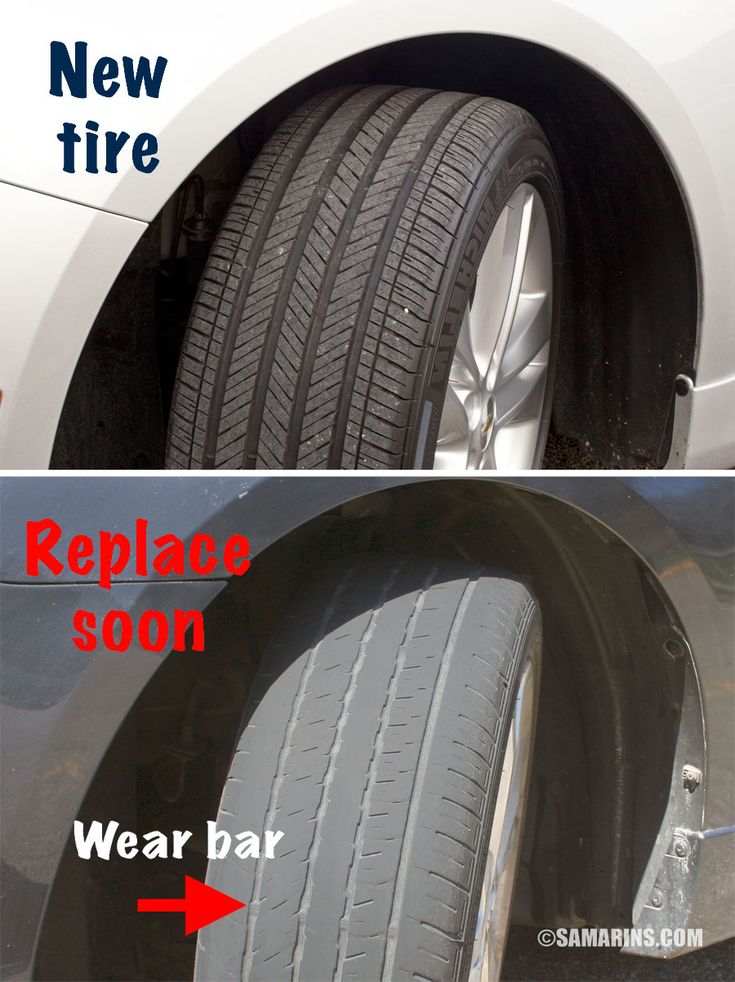
Check all four tires, especially in areas that look the most worn. If any parts of your tire fail the penny test, it may be time to replace the tire.
Consistent wear around the whole tire is normal. Uneven tread wear could be a sign of improper inflation, wheel misalignment, or a variety of other things. If you see uneven tread wear, you should have a technician inspect your vehicle.
If your tires pass these tests, you may not need to buy new tires just yet. It’s a good idea to reassess the tread every few thousand miles, or once a month, and even more often if you’re putting a lot of wear on your vehicle or driving long distances.
No matter how new your tire is, Bridgestone recommends checking inflation pressure every month and scheduling regular inspections with a pro.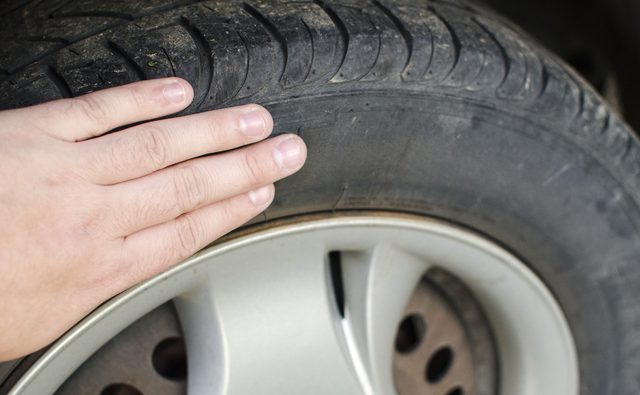 After five years, an inspection is essential to determine if a tire is still road-worthy.
After five years, an inspection is essential to determine if a tire is still road-worthy.
We recommend tires that were manufactured 10 years prior (or longer) be taken out of service and replaced with new tires. Same goes for the spare. If it’s 10 years old, it needs to be replaced, even if it appears new.
It’s important to note that the age of a tire is not the only indicator of whether it needs to be replaced. Many tires will need to be replaced before 10 years of age due to routine tread wear and other conditions such as punctures, impact damage, improper inflation, overloading and more. If a tire is worn out or otherwise unserviceable from damage or conditions of use, it should be replaced regardless of when it was produced or purchased.
Another common tire-buying question is if it’s necessary to replace all four tires at once. The simple answer is yes. It is recommended to replace all four at once because your tires are key to the performance and handling of your vehicle, it’s important for them to be as identical as possible. If your tires don’t match, one end of your vehicle may not be able to respond as quickly as the other, making it difficult to control. Your tires are what keep your vehicle connected to the road, so having an even surface is vital.
The simple answer is yes. It is recommended to replace all four at once because your tires are key to the performance and handling of your vehicle, it’s important for them to be as identical as possible. If your tires don’t match, one end of your vehicle may not be able to respond as quickly as the other, making it difficult to control. Your tires are what keep your vehicle connected to the road, so having an even surface is vital.
If you are in a situation where you will be replacing fewer than four tires, select tires that are similar to what is currently installed on your vehicle. If you are replacing just two tires, those two tires should only be installed on the rear axle. You should only consider tires that are within the same category as your existing ones.
If you have a vehicle that came equipped with a staggered fitment (different size tires on the front and back) then you should check your vehicle owner’s manual for replacement recommendations.
There are a lot of risks associated with buying used tires.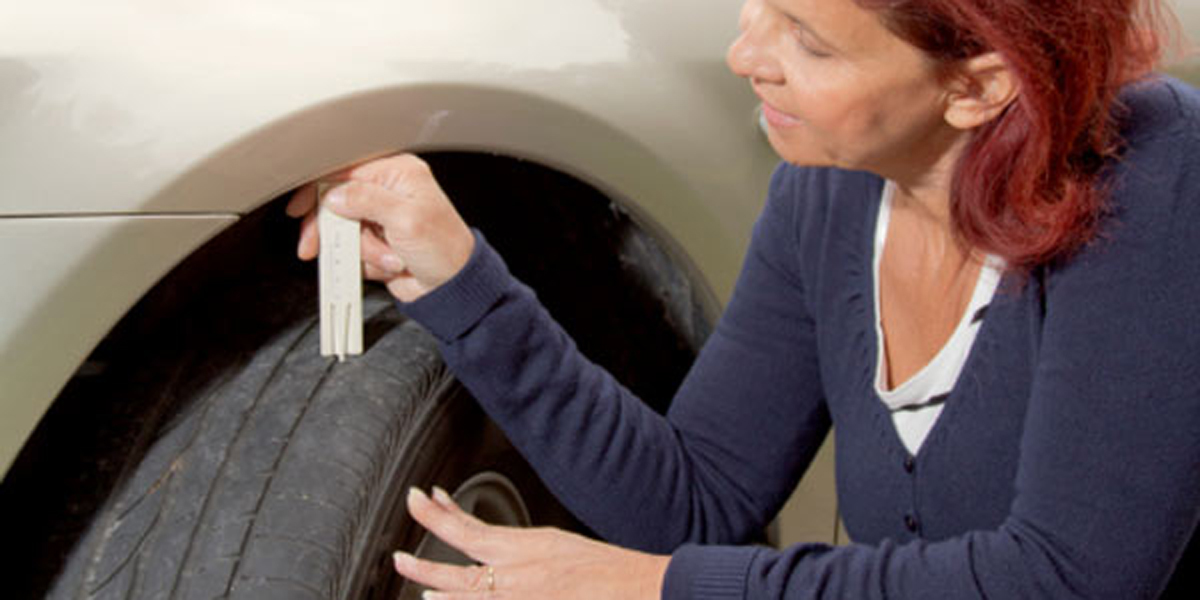 Since you don’t know the history of the tires, it can be difficult to know if they’ve been previously run under inflated, overloaded or have other unseen internal damage which could lead to an unexpected failure. Used tires might also have uneven wear, which can cause noise, vibration or other problems and may need to be replaced much sooner than new tires. It is best to replace tires with new tires of the same category, size, load capacity and speed rating as recommended by your vehicle’s manufacturer.
Since you don’t know the history of the tires, it can be difficult to know if they’ve been previously run under inflated, overloaded or have other unseen internal damage which could lead to an unexpected failure. Used tires might also have uneven wear, which can cause noise, vibration or other problems and may need to be replaced much sooner than new tires. It is best to replace tires with new tires of the same category, size, load capacity and speed rating as recommended by your vehicle’s manufacturer.
When it comes to recalled tires, there is only one position to take. We do not want anyone driving on recalled tires. We are committed to replacing, free of charge, any Bridgestone or Firestone tire (or other brands warranted by Bridgestone) subject to a customer satisfaction, quality and/or safety recall, at any time. The easiest way for consumers to get answers to questions about recalled tires is to call 1-844-293-7514 or locate an authorized Bridgestone or Firestone dealer to examine the tires in question.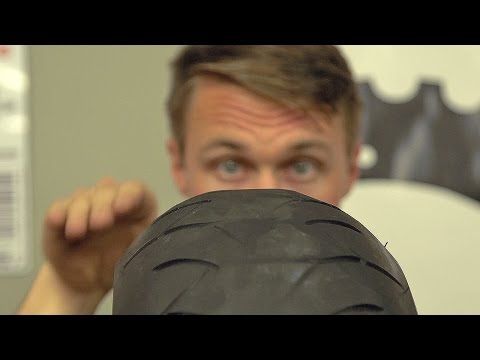 You can also check current tire recalls online at the National Highway Traffic Safety Administration site.
You can also check current tire recalls online at the National Highway Traffic Safety Administration site.
There’s no reason to guess. Talk to a tire dealer or other authorized professional so you can make certain you’re choosing the best tire option for your vehicle. Find out if tire rotation and balancing are included with your new tires. If they are not, see if you can bundle the maintenance service. Ask the dealer to outline the manufacturer’s warranty and replacement options to make certain your new investment is protected in the long run, and inquire about any specials they may be offering. With these tire-buying tips and some trusted ratings in hand, you should be able to confidently pick out new tires.
Bridgestone consistently strives to connect with drivers through our stores, dealers and media campaigns to raise awareness and educate consumers on safe driving and tire safety. We encourage all consumers to learn all they can about tire safety and why it's important to have their tires, including the spare tire, regularly inspected by a qualified professional.
We encourage all consumers to learn all they can about tire safety and why it's important to have their tires, including the spare tire, regularly inspected by a qualified professional.
Position on Recall Awareness and Tire Age
Bridgestone Americas, Inc.
 bridgestoneamericas.com/safety.com to learn about tire safety and why it’s important to have their tires, including the spare tire, regularly inspected by a qualified professional.
bridgestoneamericas.com/safety.com to learn about tire safety and why it’s important to have their tires, including the spare tire, regularly inspected by a qualified professional.Learn about our mission, our achievements, and our ongoing commitments
Read Our Origin Story
Every year in the U.S., tire-related crashes cause 200 fatalities, according to the National Highway Traffic Safety Administration. Thankfully, it’s easy to monitor your tires, and how to tell if you need new tires, with a quick video and some basic information.
Thankfully, it’s easy to monitor your tires, and how to tell if you need new tires, with a quick video and some basic information.
The primary functions of the tread on your tires are to grip the road and to divert water that causes hydroplaning. Tires with plenty of tread can help you maintain control and reduce your chances of getting a flat. With a quick monthly check of your tread and tire pressure, you’ll know if you need to replace your tires.
Tread wear bars are small, raised bits of rubber that run between the tread blocks. As these bars become even with the top of the tread, it is likely time for new tires. See more about tread wear bars below.
Tires will wear down over time, even if you don’t drive much. Sunlight, heat, and chemicals used to melt snow and ice can reduce rubber flexibility, causing tires to crack, lose air, and eventually fail.
Sunlight, heat, and chemicals used to melt snow and ice can reduce rubber flexibility, causing tires to crack, lose air, and eventually fail.
There are many factors that may cause uneven wear, which could shorten the life of your tires. Vehicle alignment, tire pressure, lack of rotation, and/or worn steering and suspension components can all contribute to this problem. To prolong the life of your tires and reduce uneven wear, consider getting them rotated at consistent intervals. At Les Schwab, we recommend getting them rotated every 5,000 milles. The pros at Les Schwab will also conduct a free visual inspection of your steering and suspension components. Schedule your free, pre-trip safety check today.
All tires deflate slowly over time, usually about 1 PSI (pounds per square inch) per month. Check yours monthly to keep them properly inflated. If your tires continually lose air or seem to completely deflate without warning, you may need to stop by Les Schwab for tire repair or replacement if necessary.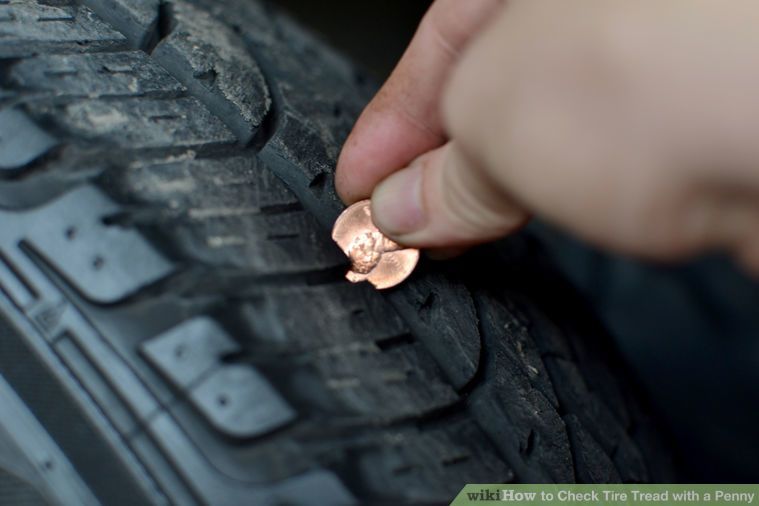 Does the TPMS (Tire Pressure Monitoring System) light often appear on your dash? This could mean your tires have developed a slow, continuous leak.
Does the TPMS (Tire Pressure Monitoring System) light often appear on your dash? This could mean your tires have developed a slow, continuous leak.
If you hit a curb, pothole or other obstacle, your tires can develop sidewall bulges due to a break of the inner liner. These bulges can rupture causing a potentially unsafe situation. If you spot a bulge on your tires, get to your nearby Les Schwab and have your tires inspected.
If you experience new vibrations or thumping while driving, it could be a sign that one of your tire/wheel assemblies is out of balance. It could also indicate a suspension issue. Stop by your local Les Schwab and our professionals will check your tires, steering, and suspension.
All tires sold in the United States today have what are called tread wear bars. The tread wear bars on your tires are there to help you see how much tread you still have.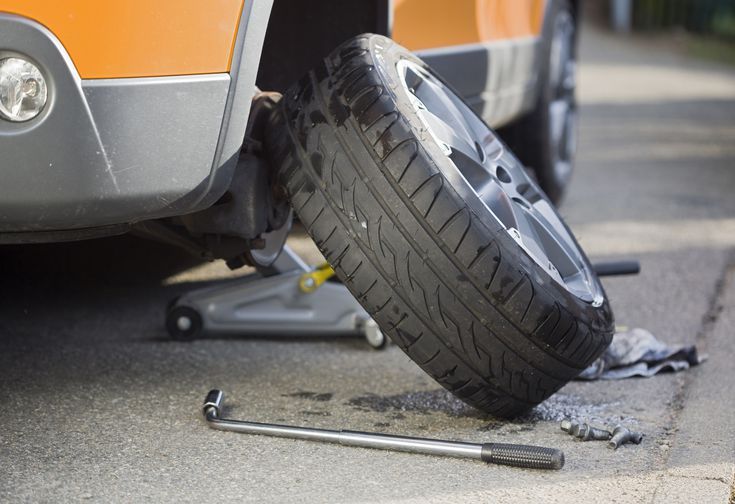 These wear bars are small, raised bars of rubber in the grooves of your tire. Look at the tread pattern and you’ll see these bars running between the tread blocks.
These wear bars are small, raised bars of rubber in the grooves of your tire. Look at the tread pattern and you’ll see these bars running between the tread blocks.
Look at the tread pattern and you’ll see these bars running between the tread blocks. As your tires wear, these bars will become increasingly flush with the tire’s tread. It’s important to replace your tires before this happens.
Depending on where and how you drive, and the conditions you face on the road, you might consider getting new tires before they reach that point. City driving in mild conditions may allow you to wait until the tread is closer to the tread wear bar before replacing your tires. More adverse conditions, such as rain, snow, and unpaved roads, may require you to replace your tires earlier.
An easy way to check the tread on your tires is to do the penny test. Take a penny and place Lincoln’s head in one of the grooves of the tire tread.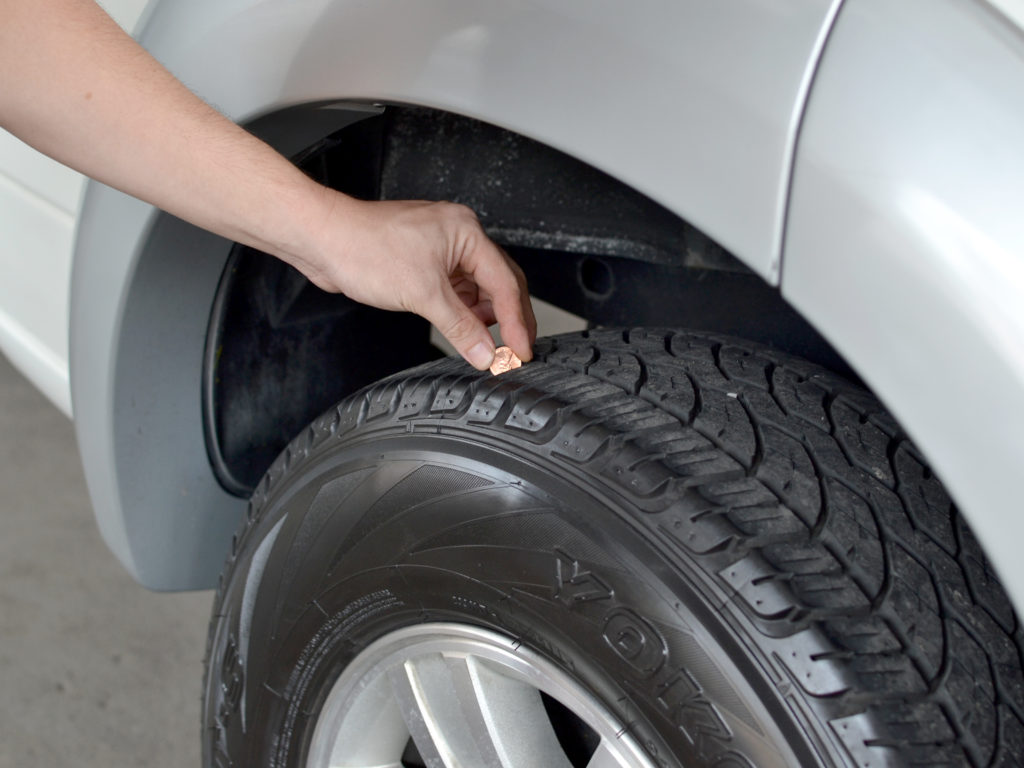 If you can see all of Lincoln’s head, it’s time to replace the tire.
If you can see all of Lincoln’s head, it’s time to replace the tire.
If the penny goes in enough that the tire tread is at least as deep as Lincoln’s forehead, your tires are generally considered safe and do not need replacing. Check all four of your tires when conducting the penny test.
You’ll find your next set of tires at Les Schwab. You also find our world-class customer service at a tire shop near you that cares about your safety on the road.
SHOP TIRES
home Blog What are the signs of tire wear?
Signs of tire wear should be known to every motorist. It is necessary to carefully monitor the condition of the tires, because safety on the road largely depends on this.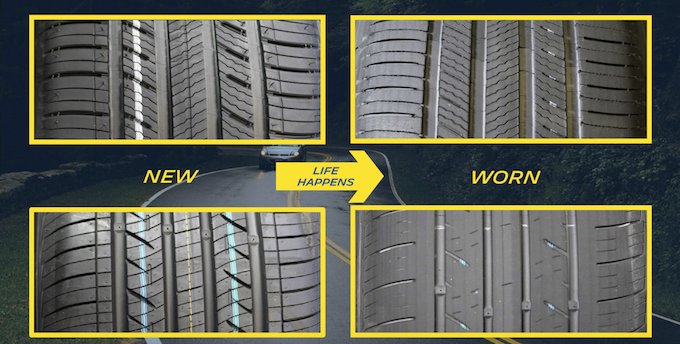
Do not forget that after the first winter season, the grip of rubber drops by about 10-15%. After the second and third - they will drop to a critical level. In addition, deterioration in the elasticity of tires will be added to wear. This process is gradual and slow, so many motorists simply do not see it. Most motorists begin to sound the alarm already when the tires do not hold the road at all.
After the second and third - they will drop to a critical level. In addition, deterioration in the elasticity of tires will be added to wear. This process is gradual and slow, so many motorists simply do not see it. Most motorists begin to sound the alarm already when the tires do not hold the road at all.
Request a call
Our manager will contact you
to discuss the details
Not all data entered!
By clicking on the button, you consent to the processing of
Order a call
If the product is not available, leave your contacts and the manager will contact to discuss the details
Not all data entered!
Send
or
For more information call:
+7 (499) 390-51-33 +7 (925) 449-68-72
By clicking on the button, you consent to the processing of
Buy in 1 click
Our manager will contact you to discuss parts and accept your order
By clicking on the button, you consent to the processing of
Write to us
Our manager will answer you shortly
By clicking on the button, you consent to the processing of
Found cheaper?
Our manager will answer you shortly
Found a product at a lower price - write to us and you can buy it at the lowest price.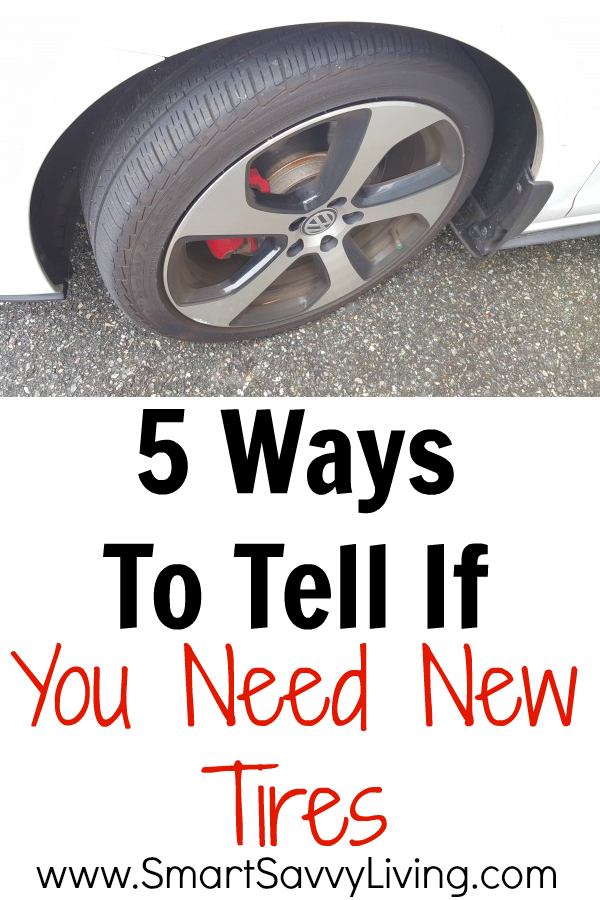
By clicking on the button, you consent to the processing of
Privacy Policy
Car tires are the only point of contact with the road surface, so they must be in good condition to keep your car safe. Simply put, a car cannot be safe if its tires are in poor condition.
As the only vehicle elements that are constantly in contact with the road, tires contribute not only to safe handling and braking, but also to increased comfort and overall vehicle performance. You can choose the right ones at https://infoshina.com.ua/, where they are presented in a wide range.
Unfortunately, even branded tires suffer from wear and tear. And the degree of wear proportionally affects how the car behaves on the road.
There comes a time when replacement is obligatory - the exact timing of replacement depends on:

Look out for the signs that it's time to change worn tires.
These signs are quite obvious and include little more than a visual inspection of the condition of the rubber. There are more complex methods of determining, for example, tire wear is detected by how the car moves.
Although problems such as poor grip when braking or cornering, or excessive vibration can usually be avoided with regular service visits.
Vehicles should ideally be inspected by a service technician every two weeks or so (which largely depends on the financial means of most car owners).
However, in more difficult situations, it is recommended to contact a specialist in a tire center - this will help save money, and often save lives.
Content
The tread is needed to provide better grip on wet surfaces by removing water under the wheel and providing better contact with the road.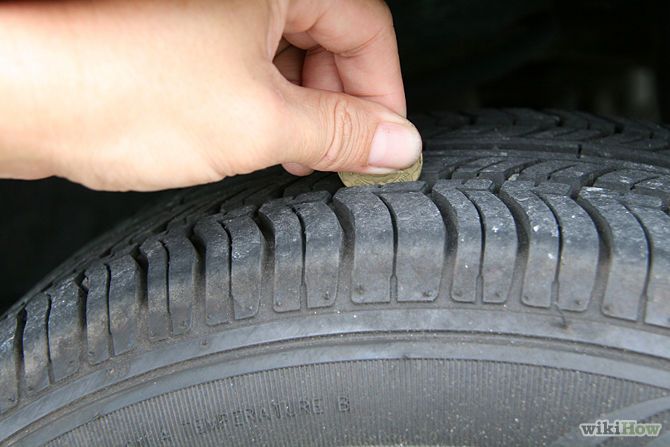 Therefore, the smaller it is, the greater the risk of poor grip on a wet track.
Therefore, the smaller it is, the greater the risk of poor grip on a wet track.
All tires have tread wear indicators (TWI) containing small blocks of rubber inside the tread at certain points. As the rubber wears out, these blocks eventually become flush with the surface of the tire.
Once this has happened, the tire becomes unusable because only 1.6mm of tread is left at this point. It is recommended to change tires as soon as the tread depth drops to about 2 mm.
The easiest way to find out is to use the tread depth indicator. Often tire retailers offer them for free, otherwise this inexpensive fixture can be purchased at an auto parts store.
Typically, uneven wear indicates something is wrong with the wheels, such as worn suspension or that you were driving with underinflated (unevenly inflated) tires.
Uneven wear also occurs if you regularly tow a trailer or prefer a driving style that puts more than normal stress on the wheels.
Inspect the entire contact surface, including the outer edges, to check for uneven wear. Front wheel drive machines usually have more wear on the front tires, but you should still pay special attention to the relative wear of both the front and rear wheels.
It is recommended to regularly swap tire pairs for both front-wheel drive and rear-wheel drive vehicles, provided that they are the same size front and rear (some car models are different).
As a general rule, tires over five years old need to be replaced. Even if the mileage is negligible or they have not even been used, rubber still ages, as it loses elasticity due to drying and fumes from oils and gasoline. This applies to both existing tires and spares.
The age of a tire can be determined by reading the build date marked on the sidewall. It is marked as a four-digit number indicating the week and year of issue. It is also worth noting that in hot climates they wear out faster.
If the tires are to be replaced, it is recommended to change them all at the same time, including the spare. Otherwise, out of the box replacement may affect the overall balance of the car and traction.
It is also necessary to know if the tires have a certain direction of rotation. They must be set accordingly.
It is equally important that tires of the correct size, matching the original, are selected for replacement. Modifying the profile may affect the rolling circumference, requiring a change in disc size.
Tire profile height affects many factors. For example, tires with a high profile are more resistant to uneven surfaces, while a low one guarantees excellent handling.
The most widely used is an inexpensive all-round tire that is suitable for both high-speed driving and freight transport. It is less susceptible to mechanical damage. Universal summer tires will surely last several seasons.